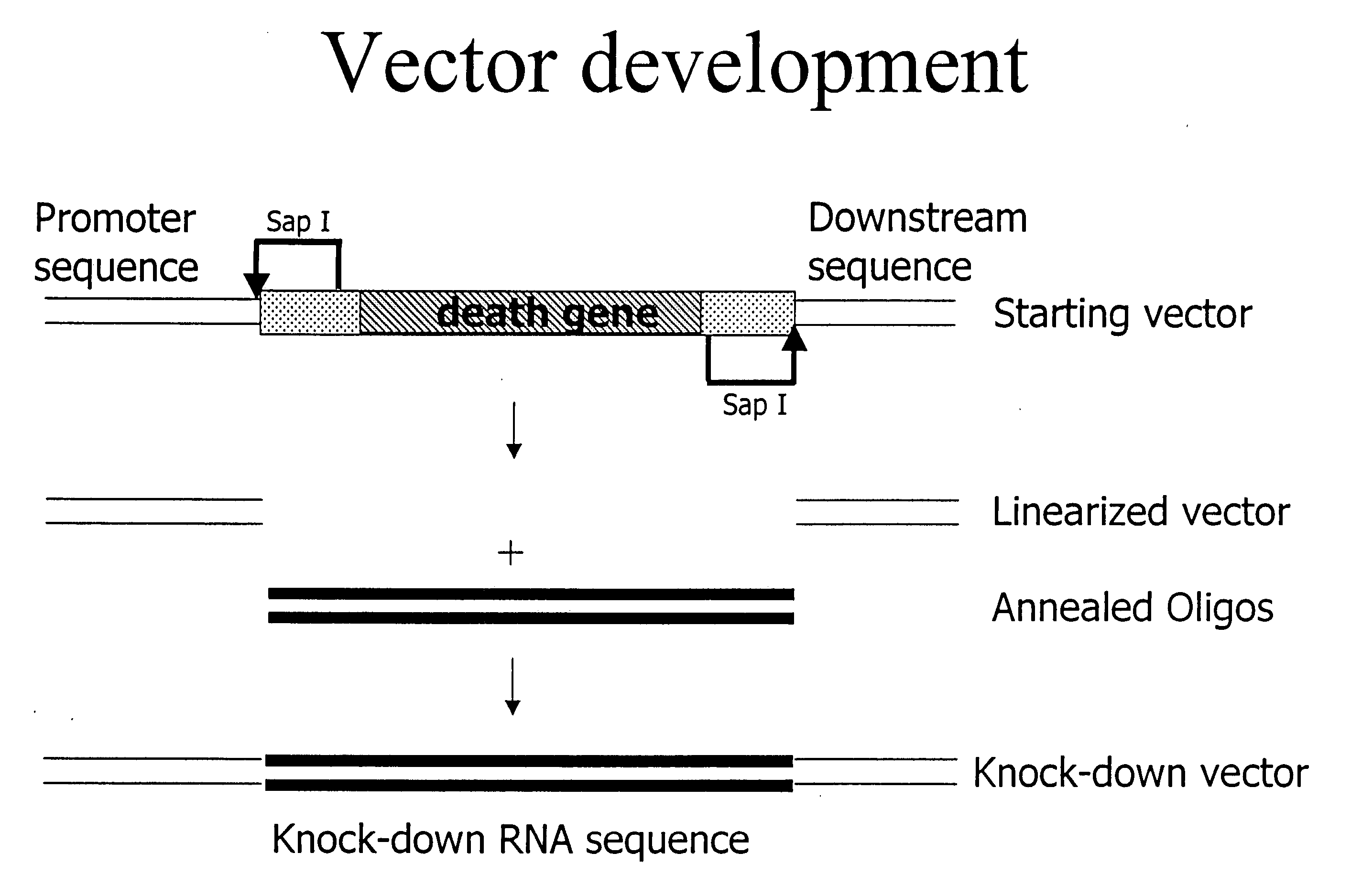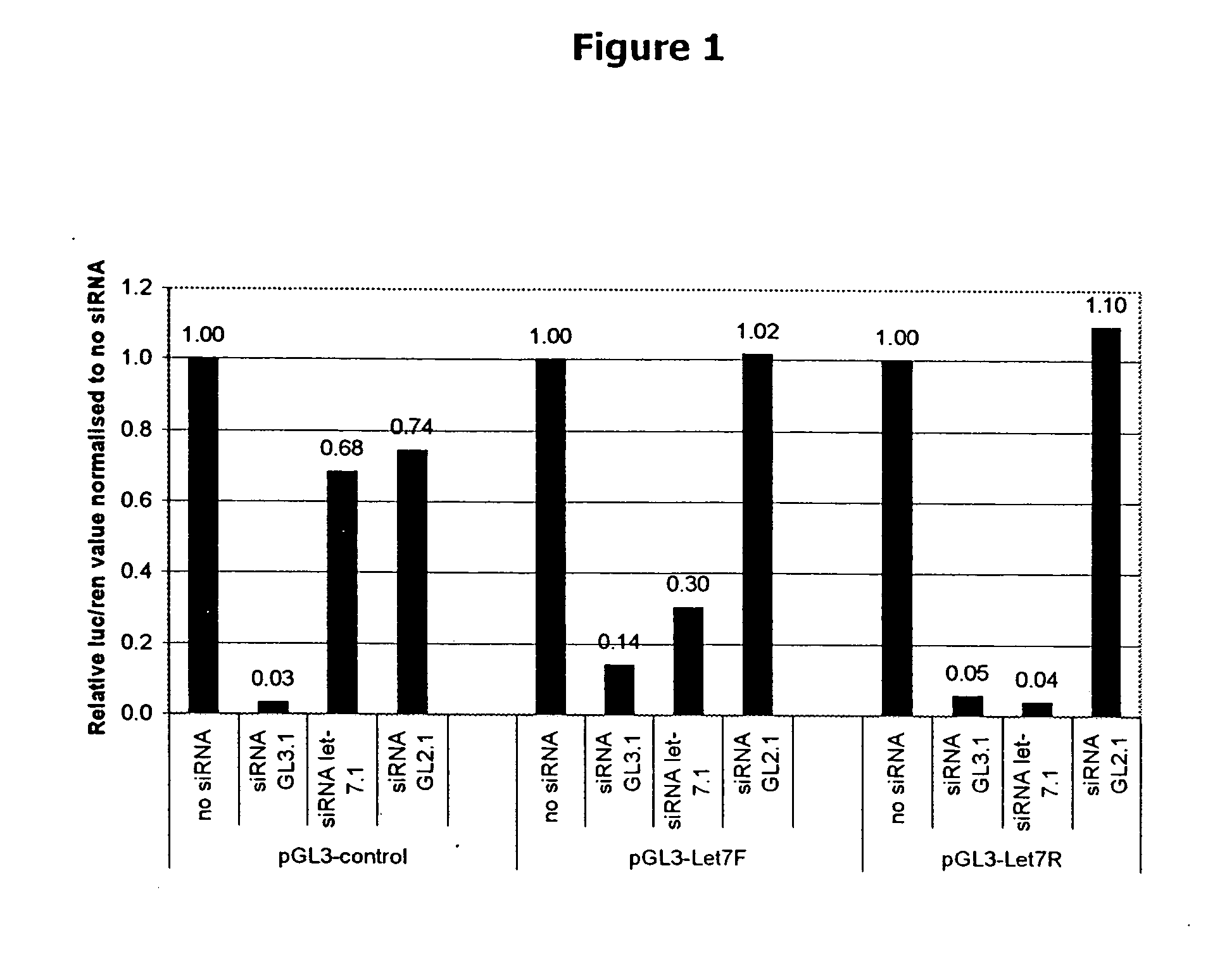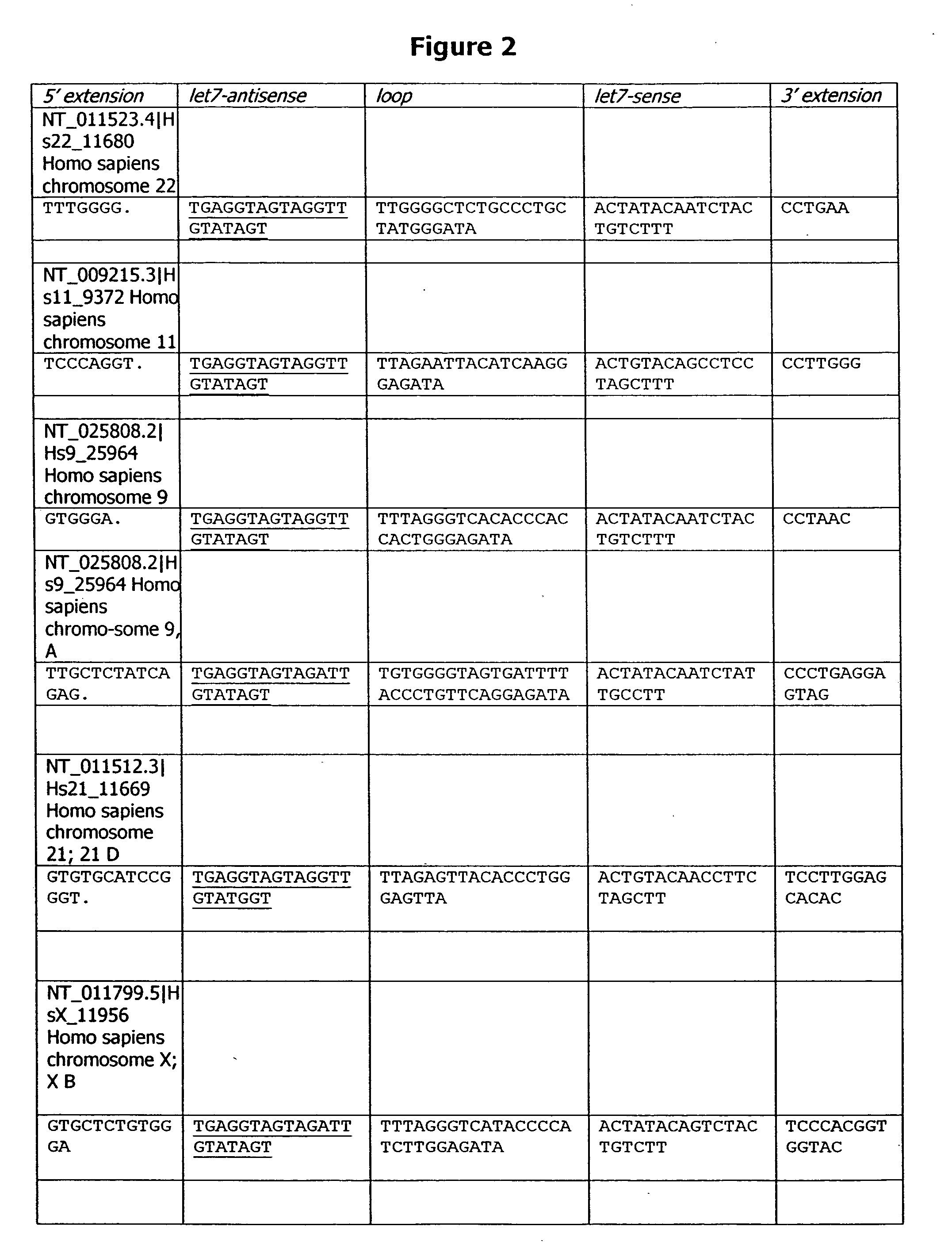siRNA knockout assay method and constructs
a technology of sirna and constructs, applied in foreign genetic material cells, biochemistry apparatus and processes, sugar derivatives, etc., can solve the problems unable to easily perform high throughput, and unable to generate stable transgenic cell lines or transgenic mice, etc., to achieve the effect of reducing the amount of at least one rna molecul
- Summary
- Abstract
- Description
- Claims
- Application Information
AI Technical Summary
Benefits of technology
Problems solved by technology
Method used
Image
Examples
example 1
A Reporter Assay System Based on let-7 Target Sequence to Monitor Repression
[0150] Example 1 describes development of a reporter assay system that provides a method for measuring knockdown of a readily assayed gene. This system is used to determine if siRNAs and chimeric RNAs can decrease expression of the readily assayed luciferase gene. The system consists of two components. The first component is a reporter DNA molecule based on the pGL3 luciferase reporter vector (available from Promega), which has been modified to include a let-7 target sequence derived from the human let-7 sequence found on chromosome 22. These reporter constructs are designated as follows: The names start with a ‘p’ indicating that the construct is in a plasmid, then the name of the reporter gene follows (e.g. GL3 or GL2), after that the target sequence is mentioned starting with a ‘t’ to indicate that it is the target sequence. For example: pGL3-tLet7 describes a plasmid containing the GL3 gene as reporter ...
example 2
Testing Chimeric let-7 RNAs
[0198] This example describes preparation of let-7-based chimeric RNAS, which are tested for the ability to knock down gene expression in the system described in Example 1.
[0199] The two complementary RNA strands of the siRNA-duplexes of Example 1 are covalently linked using an RNA loop structure, making a single RNA molecule containing both siRNA strands. This results in a molecule folding into an RNA-duplex with a loop structure on one side of the duplex and a 3′ overhang of 2 uridine residues on the other side of the duplex. Molecules containing this loop structure and the sequences are referred to as chimeric RNAs. The constructs are referred to as follows: loop RNA followed by the gene they are targeted against, e.g. loop RNA GL2.2 is a chimeric RNA molecule containing a loop directed against GL2. The extension ‘0.2’ is to indicate that the RNA contains a loop in contrast to the extension ‘0.1’ used in Example 1 indicating a duplex RNA without a loo...
example 3
Let-7 Promoter for Expression
[0264] This example describes a DNA expression construct producing siRNA, and the identification and cloning of the human let-7 promoter and human let-7 genomic sequence in a DNA vector. The let-7 promoter is used in the expression construct to produce siRNAs. However, as described below, other promoters can be used as well.
[0265] Included in this Example are: [0266] 1. Results of a DNA database search using let-7 guide sequence as a probe; [0267] 2. Predicted secondary structures of RNAs transcribed from let-7 genomic clones; [0268] 3. Description of isolation of human let-7 promoter; [0269] 4. Description of isolation of human let-7 genomic clone; and [0270] 5. Methods for modifying let-7 genomic constructs.
[0271] A. Cloning of the Let-7 Promoter
[0272] A DNA database search using let-7 guide sequence as a probe results in three perfect matches on the human genome, on chromosomes 9, 11, and 22, and five near perfect matches on chromosomes 9, 21, X, ...
PUM
| Property | Measurement | Unit |
|---|---|---|
| Electrical conductance | aaaaa | aaaaa |
| Length | aaaaa | aaaaa |
| Electrical resistance | aaaaa | aaaaa |
Abstract
Description
Claims
Application Information
 Login to View More
Login to View More - R&D
- Intellectual Property
- Life Sciences
- Materials
- Tech Scout
- Unparalleled Data Quality
- Higher Quality Content
- 60% Fewer Hallucinations
Browse by: Latest US Patents, China's latest patents, Technical Efficacy Thesaurus, Application Domain, Technology Topic, Popular Technical Reports.
© 2025 PatSnap. All rights reserved.Legal|Privacy policy|Modern Slavery Act Transparency Statement|Sitemap|About US| Contact US: help@patsnap.com



